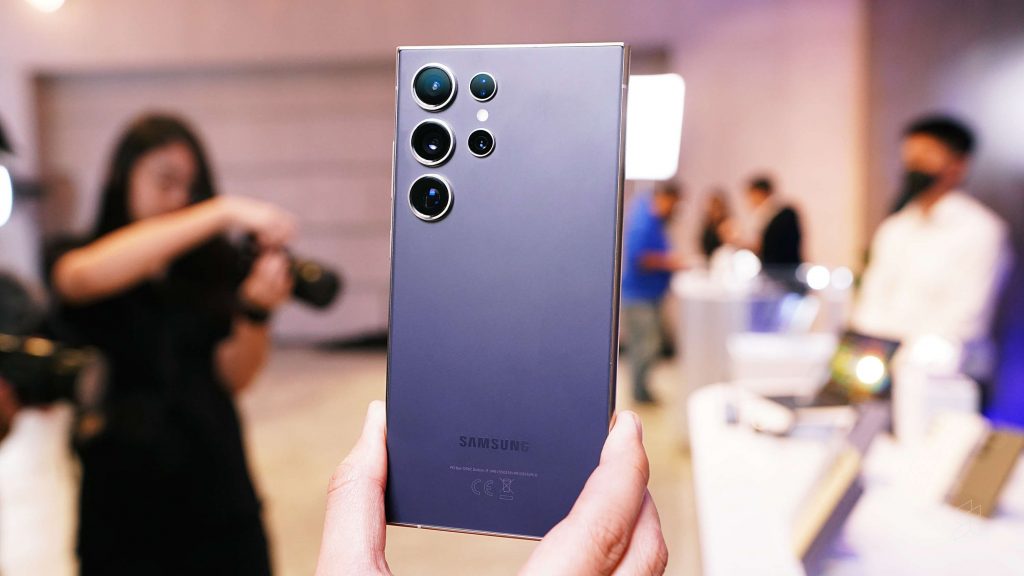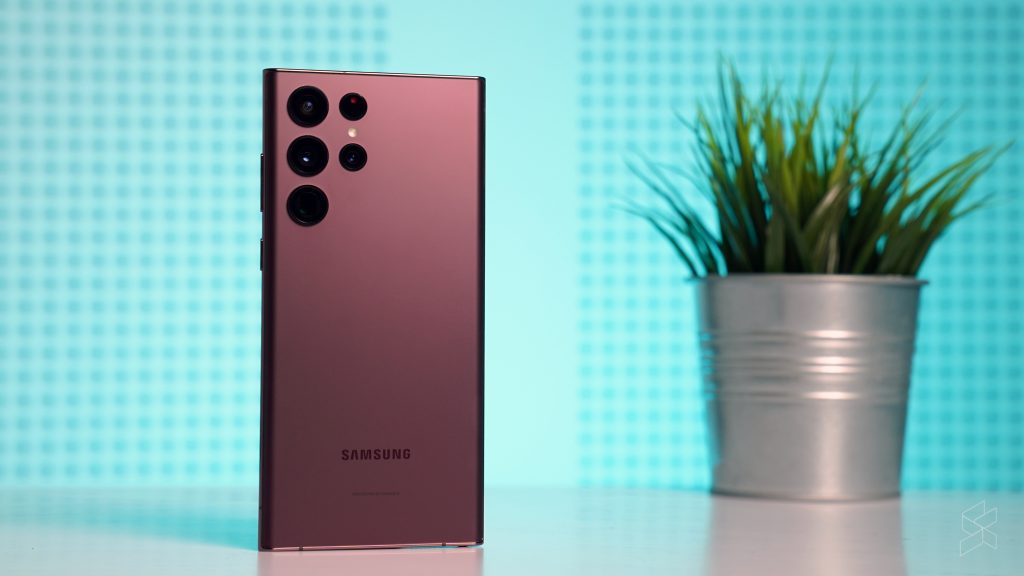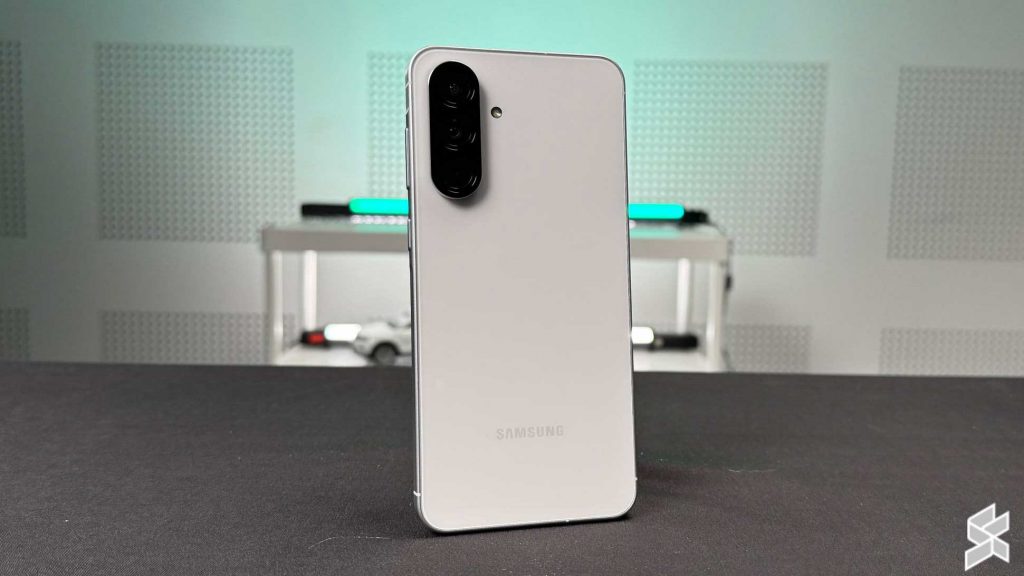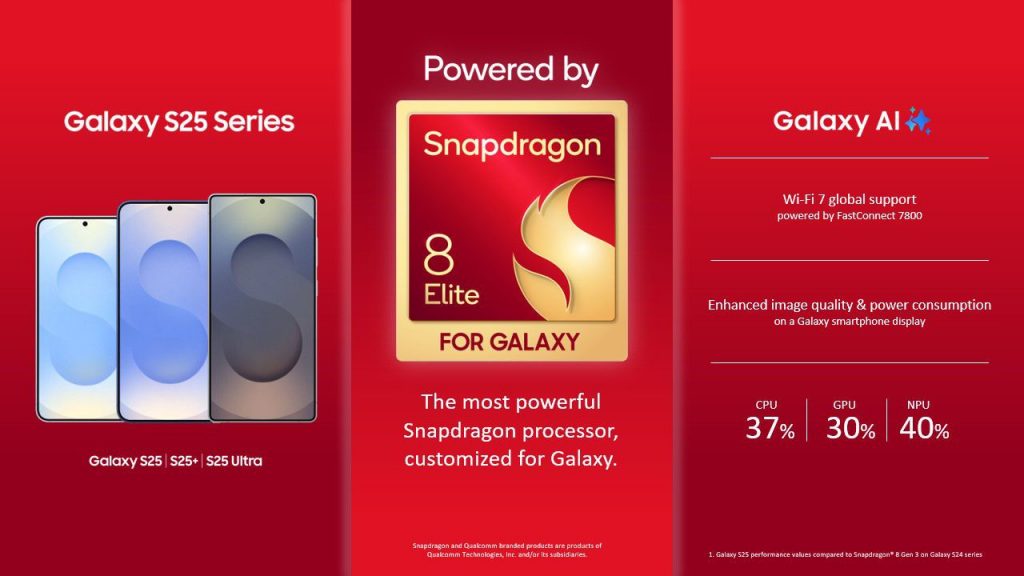Prior to Samsung’s January 2025 Galaxy Unpacked event, rumours suggested that the Galaxy S25 Ultra would see little to no major changes over the Galaxy S24 Ultra from the year before.
And now that we’re living in the future, and to the disappointment of Samsung fans, we know those leaks and rumours turned out to be true. With the Galaxy S25 Ultra, we gained some features over its predecessors, but we have lost some too.

Don’t get me wrong, despite not being too different from its ancestors, it’s still one of the highest-spec Android smartphones out there, sporting features that most of its competitors have yet to harness, even over 13 years after the launch of the original Galaxy Note.
At the end of the day, what does that mean for the Samsung Galaxy S25 Ultra? Is it the ultimate Android flagship you should upgrade to, or is it the disappointing phablet that you should skip this year? Here’s what I learnt after trying out the Galaxy S25 Ultra for nearly two months.
If not broken, why fix change it?




Try handing the Galaxy S25 Ultra and S24 Ultra to random people on the street, and I bet most of them won’t be able to tell which is which. In fact, they won’t notice if you swap one of these for the Galaxy S22 or S23 Ultra either, which don’t look too different from the S25 Ultra in the first place, especially to the layman.
But if you want to get into the specifics, here are some of the subtle changes made to the Galaxy S25 Ultra:
- Slightly rounded off corners
- Flatter sides
- More pronounced-looking camera rings
To be fair, this isn’t just a Samsung thing, as Apple hasn’t been altering the iPhone Pro/Pro Max’s design since the iPhone 12 generation, at least in a major way. That’s a five-generation streak of similar-looking iPhones. Sony isn’t any less guilty either in this regard.

Looking at this from an objective standpoint, the Galaxy S Ultra already had good genetics from the get-go, and to my eyes, the S25 Ultra is the best-looking the series has ever been. Being the flagship model in Samsung’s non-foldable smartphone lineup, you get premium materials such as glass panels and a grade-5 titanium frame.
But if a premium-built Samsung phone is all you’re looking for, you don’t have to spend over RM5,000 just to get that. Samsung’s own mid-range offering, the Galaxy A56, already grants you a similarly premium design for less than RM2,000. Sure, you do get a better experience in literally every other aspect by spending more for the S25 Ultra, but the fact that you can already get a phone that’s just as well built at less than half the money is something worth pointing out.

Aside from its premium build, the Samsung Galaxy S25 Ultra also boasts one of the brand’s strongest assets — an exceptional display. Specifically, this phone sports a 6.9″ Quad HD+ (3120×1440) LTPO AMOLED panel with a refresh rate of up to 120Hz and a peak brightness of 2,600 nits. So yes, the Galaxy S25 Ultra’s display is 0.1″ larger than its predecessor, but Samsung has trimmed its bezels even further, giving you a larger display in a body that’s barely larger than last year’s model.
Like other high-end Samsung displays, this one delivers crispy, vibrant, and punchy visuals, making it an excellent panel, especially for entertainment. I personally enjoyed this display so much that I preferred watching my Netflix shows on the Galaxy S25 Ultra over the 65″ Sharp LED TV I have back home.
Granted that TV has been serving me and my family for almost a decade, but the fact that a “tiny” smartphone display can provide a more immersive viewing experience than a TV says quite a lot about Samsung’s expertise in making excellent smartphone displays.
Ultra smartphone, ultra performance

Before the final details of the Samsung Galaxy S25 series were confirmed, I was hoping these smartphones would launch in Malaysia with Qualcomm’s Snapdragon 8 Elite chipset rather than Samsung’s in-house Exynos chip. For years, Qualcomm’s Snapdragon 8 series chip has generally delivered better performance and efficiency than Samsung’s Exynos counterparts over the past few years.
Despite that, Samsung has had the record of shipping Exynos variants of its Galaxy S flagships to international markets, including Malaysia, while markets like the US, South Korea, and Japan often receive the Snapdragon models. This regional differentiation has been a long-standing frustration among users who feel they’re getting the less capable version of the same premium device.
To be fair, the entirety of the Galaxy S23 series in 2023 received Qualcomm’s then-flagship smartphone chipset, the Snapdragon 8 Gen 2. In 2024, however, only the Galaxy S24 Ultra got the Snapdragon 8 Gen 3 chipset, while the vanilla Galaxy S24 and Galaxy S24+ had to make do with Samsung’s own Exynos 2400 instead.

But, with the Galaxy S25 series, and I mean the whole lineup, I’m glad that all of them got Qualcomm’s latest and greatest mobile chipset that’s been specifically designed and optimised for Samsung’s latest flagship smartphones — the Snapdragon 8 Elite for Galaxy.
As you can already tell from its name, this isn’t any ordinary Snapdragon 8 Elite. It packs a slightly higher clock speed for its CPU and GPU and an ISP specially optimised for Galaxy cameras.

In the real world, performance is spectacular. But like some of its competitors, such as the iPhone 16 Pro Max and OnePlus 13, its cameras can get a little warm after 10 minutes of use, especially when outdoors. Aside from that, the Samsung Galaxy S25 Ultra is one of the best-performing Android phones you can get today.
But, if what you’re looking for is just a phone with the Snapdragon 8 Elite chipset, you can certainly save some money by going for alternatives like the Poco F7 Ultra or the iQoo 13.


Since we’re on the performance topic, let’s also touch on the Galaxy S25 Ultra’s battery life. Like the S24 Ultra, you get a 5,000mAh battery, which is considered mega in Samsung’s smartphone camp.
Although not as big as rivals from Xiaomi, Oppo, and Vivo that sport battery capacities as large as 6,000mAh, thanks to silicon carbide technology, I still managed to squeeze out great battery life out of the Galaxy S25 Ultra.
With the always-on display switched off and display resolution set to the full Quad HD+, I was able to squeeze out up to 6 hours of screen-on time (SOT) over 24 hours of use. The SOT figure gets decreased by just 30 minutes when I choose to turn on the always-on display. Simply speaking, you will easily be able to use the S25 Ultra for longer if you’re willing to lower the display resolution.
Spectacular cameras, but how do they compare against the iPhone?

Over the past few years, Samsung garnered quite some attention from the public with its Galaxy S Ultra series, particularly for its camera’s impressive zoom capabilities. You might have seen videos online on how these phones can capture photos of artists from a faraway spot during a concert, and even the moon.
Today, the Samsung Galaxy S25 Ultra is no longer just competing against the best iPhone or Google Pixel, but also flagships from the likes of Oppo and Vivo, which not only offer great and capable hardware, but also exceptional-looking colours, thanks to their collaboration with legacy camera-makers such as Leica and Hasselblad.

But before we get into that, let’s first take a look at the camera hardware the Galaxy S25 Ultra has to offer. For starters, the Galaxy S25 Ultra’s camera setup is pretty much similar to its predecessor, except for its ultra-wide-angle camera that has been upgraded from 12MP to 50MP with an f/1.9 aperture.
The other three camera modules are pretty much kept unchanged:
- 200MP f/1.7 main camera with OIS
- 10MP f/2.4 telephoto camera with OIS
- 50MP f/3.4 periscope telephoto camera with OIS
So, how did the Samsung Galaxy S25 Ultra perform as a camera phone? Well, it’s good and is at the level of what you would expect from a phone of this price point. The phone delivered great quality photos at basically all zoom ranges, both in bright and dark environments.











Now, for those of you who wonder how it performs against Apple’s best, the iPhone 16 Pro Max, here’s what I’ve learnt after putting these two phones through a brief photography test.
First off, I noticed that photos taken using the Fruit Phone tend to be brighter, and darker parts of the image are better preserved during high dynamic range situations. However, the Galaxy S25 Ultra’s images are more saturated and contrasty. Upon cropping in, the Samsung also delivered better details, most likely thanks to AI enhancements.
The same also happened to photos taken using the periscope telephoto lens. The Samsung is the better performer at delivering more details, most probably thanks to its higher resolution 50MP periscope telephoto camera unit, as compared to the fruit brand’s 12MP. At the end of the day, it’s down to your personal preference on which phone captures photos that look better to your eyes. But if capturing super faraway subjects is what you do often, you will be glad to know that the Galaxy S25 Ultra is able to zoom all the way to 100x, while the iPhone tops out at 25x.

























Great quality, natural-looking photos are no longer enough?

For years, the smartphone camera game has been dominated by the three smartphone giants — Samsung, Apple, and Google. Year after year, they have been striving to deliver great quality photos with their annually-released flagship smartphones to try to one-up each other. However, these shouldn’t be the only brands you should consider when looking for the best smartphone cameras today.
Take Oppo, OnePlus, Vivo, and Xiaomi, for example. They’ve been collaborating with legacy camera-makers such as Leica, Hasselblad, and Zeiss to co-develop their smartphone cameras, especially flagship models, which result in artsy-looking colours that look like they’re taken using a DSLR and edited using Photoshop. You may check out our written review for the OnePlus 13 as an example.

Brands like Xiaomi and Sony have also been taking more risks to try out different technologies in the smartphone imaging space. For instance, Xiaomi and Sony have equipped some of their smartphones with 1-inch camera sensors. In fact, Xiaomi just launched its latest 1-inch-sensor-equipped model, the Xiaomi 15 Ultra, in Malaysia earlier this year. This is without even considering other smartphones with zoom lenses that feature actual moving optics and even gimbals.
So, are smartphone cameras that capture great quality and natural-looking photos still enough to be considered great? Well, if you often capture photos with your smartphone with the intention of posting them to social media to impress your friends, flagships from the likes of Oppo, Vivo, OnePlus, and Xiaomi might suit you better, so the answer in this case will be no.
However, if you want your photos to look great but still retain the realism of the colour as much as possible, flagships from brands like Samsung, Google, and Apple might still be your better options.
One UI 7: Easily the best Android UI

I used to dislike colourful user interfaces (UI) like TouchWiz back in the day. But it looks like the tables have turned for me with the brand’s latest One UI 7. Samsung has stayed true to its colourful roots, but this one is done exceptionally tastefully and without compromising the UI’s smoothness.
One of the new features Samsung has introduced with One UI 7 is the Now Bar. It’s essentially the Korean brand’s reimagined version of Apple’s Dynamic Island. But unlike the Dynamic Island, the Now Bar is located at the bottom of the screen when you’re at the lock screen.




It’s also more powerful than Apple’s version in the sense that it can run up to eight “Bars” at a time, which is four times more than the maximum amount of two “Islands” you can have on iOS. Managing the multiple “Bars” is also pretty intuitive. Simply swipe up or down to browse through the ongoing activities.
The way Now Bar operates is similar to Apple’s solution, though. For instance, you can start a stopwatch or timer, and upon exiting the app, the stopwatch or countdown will shrink into the status bar, which you can tap on to expand and check on it. Now Bar also supports third-party apps such as Google Maps, just like Dynamic Island does.




Also new with One UI 7, specifically the Galaxy S25 Ultra, is the Audio Eraser feature, which is a neat AI-powered feature that allows you to adjust up to six sound categories in a video — voices, music, crowd, nature, wind, and noise. This feature proved itself useful when I recorded a short video at a product launch, all without needing to connect an external microphone.
S Pen: I love it, but why the stepback?

I have to admit that I’m not the “note” kind of person. My typical smartphone usage doesn’t require a stylus for handwritten notes or doodling.
But while reviewing the Samsung Galaxy S25 Ultra, I gave its S Pen a go, and immediately understood why Samsung Note/Ultra fans love it. I found it particularly useful for when I need to take a quick note, and even became a lifesaver when I needed to hand-sign insurance documents. Doodling is also fun with the S25 ultra, as thanks to Galaxy AI, I can turn my primary-school-level doodle into a proper drawing in just a matter of seconds.

But of course, this is just scratching the surface, as the S Pen can do even more things, such as quickly selecting a part of the screen you want to record and turning that footage into a GIF to send to your friends.
As someone with no artistic gift, the ability to doodle something and have it turned into a full-on, proper watercolour artwork using the Sketch to Image function within Samsung Notes is just awesome. The S Pen just makes this feature even easier to use, as drawing on a smartphone using my index finger has never been a pleasant experience.

Till today, which is May 2025, a feature like the S Pen is still entirely unique to Samsung’s Galaxy S Ultra series, giving the S25 Ultra a major upper hand over its rivals. It need not be said that they could have just left the S Pen where it is to make the last Galaxy S Ultra device one of the world’s most versatile phablets, right?
Since the Galaxy Note 9, the Samsung Galaxy Note/ S Ultra lineup has had S Pens featuring Bluetooth Low Energy (BLE). Essentially, this allows you to do things such as using the S Pen as a camera shutter or presentation slides remote, and even wave the S Pen around to, let’s say, control your music volume, as if you’re a wizard in Harry Potter.

But for whatever reason, the Korean company decided that it was smart to remove BLE from the Galaxy S25 Ultra’s S Pen. Essentially speaking, it’s as if we’ve been thrown back to 2017 in terms of S Pen technology (The Note 8 was launched in September 2017).
Initially, many thought this was just Samsung’s attempt at pulling Apple’s classic “create a problem, sell a solution” trick — remove BLE from the bundled S Pen and sell a new BLE-equipped S Pen to earn some additional bucks. But that didn’t happen.
So, is there no way to solve this issue? Well, if you already own a Galaxy Watch or a Galaxy Ring, the solution is already on your wrist or finger. Just use your Galaxy Watch’s Camera Controller app or tapping gestures with your Galaxy Ring to remotely capture photos or videos on your Galaxy S25 Ultra. Don’t have one of these wearables? Samsung will certainly be happy to sell you one.
If you don’t want to spend any more money than you’ve already spent on your Galaxy S25 Ultra, just do the old trick — show your palm in the frame and the phone will automatically capture an image for you.
Conclusion: Still the best “default” Android ultra flagship

So, is the Samsung Galaxy S25 Ultra worth buying? Yes. It’s well built, has arguably the best display on the market, the best chipset in the Android camp, one of the best Android UI, awesome cameras, and is also a great productivity tool thanks to its S Pen and Samsung’s Galaxy AI suite.
If you’re wondering if you should upgrade to the Galaxy S25 Ultra, you obviously shouldn’t if you own a Galaxy S24 Ultra or Galaxy S23 Ultra. Your phone is very similar in almost every aspect, is still powerful enough, and more importantly, you have a more useful S Pen.

In fact, the Galaxy S24 series is promised with a 7-year software update support from Samsung, while the S23 series still gets 4 years of OS updates and 5 years of security updates. These phones can certainly last you for quite a while, so save your money.
As for those of you rocking Galaxy S22 or S21 series devices, it’s up to you to decide whether the upgrade is worth it for you. In fact, these devices are also getting Samsung’s One UI 7 update with Android 15.
But if you’re still holding on to your Galaxy S20 series or older device, upgrading to the S25 Ultra does make sense. Not only are you getting a more premium build, you’re also getting a larger and brighter display, faster performance, better cameras, but interestingly, the same battery capacity and charging speed. Another reason to upgrade is that these devices are not on the list of receiving Samsung’s latest One UI 7 software.
But does maturity necessarily equal boring?

One question that immediately popped into my head when I first picked up the Samsung Galaxy S25 Ultra was, “Have we reached peak smartphone?”. Well, yes and no. I say yes because the Galaxy S25 Ultra is clearly a mature device with solid hardware and software, and it pretty much packs more specs and features than most people need in a smartphone.
But, it’s also a no due to the existence of more advanced technologies like foldable smartphones that are only going to get even thinner and lighter, and who knows how this technology will evolve in the next 5 or even 10 years.

As mentioned before, there are also competitors that are trying out and innovating on features such as larger camera sensors, and even creative designs like the Nothing Phone lineup, which also deliver a relatively solid hardware and software experience. So no, a mature device doesn’t necessarily have to be boring.
Looking back, the three-year leap from the Galaxy Note 8 to the Galaxy S20 Ultra saw major advancements in design, software, performance, and especially imaging technology. However, the same 3-year leap from the Galaxy S22 Ultra to the Galaxy S25 Ultra seems to have been a much smaller evolution.
Buy or Bin? | Samsung Galaxy S25 Ultra Review: Maturity = Boring?
News Reports PH
0 Comments